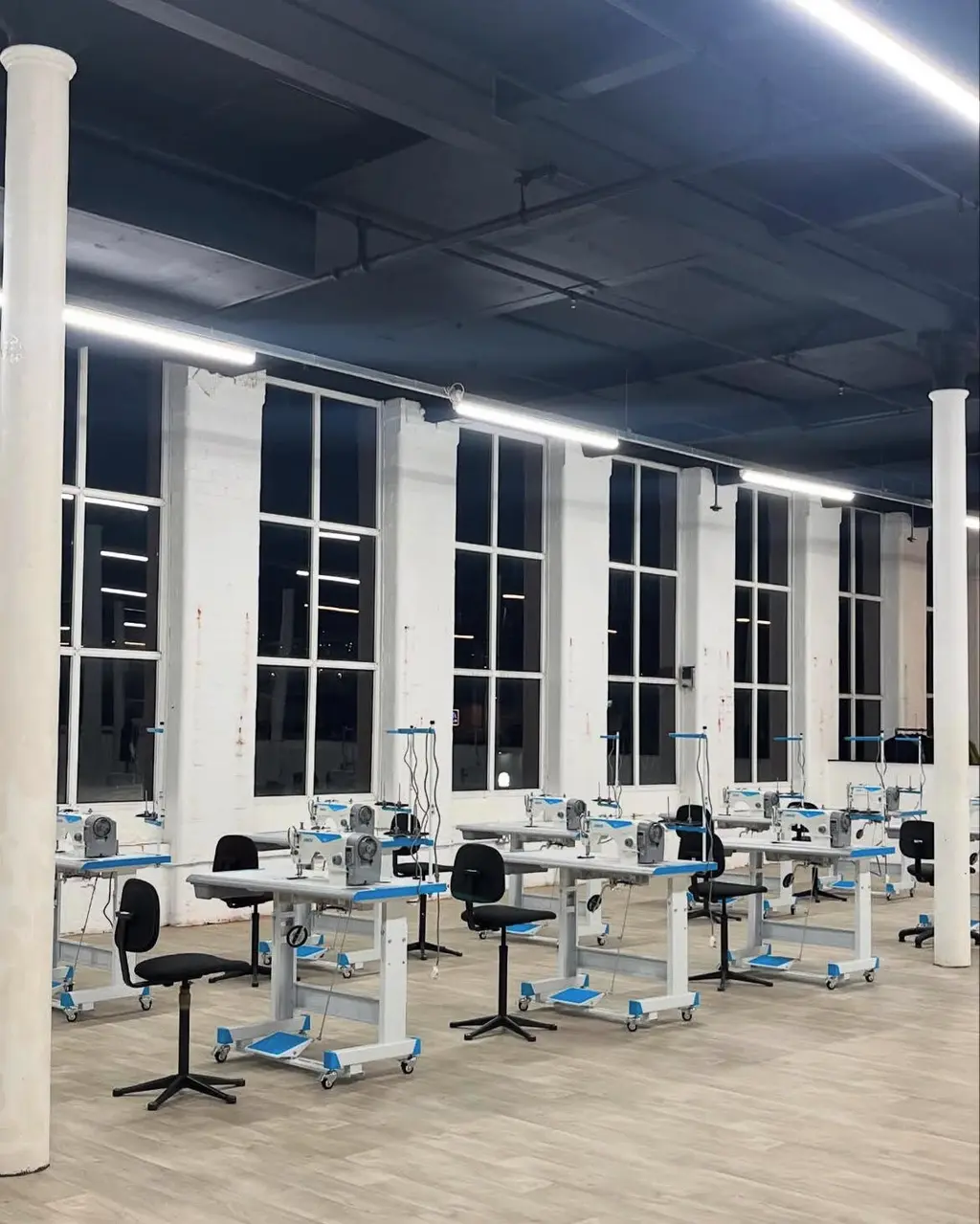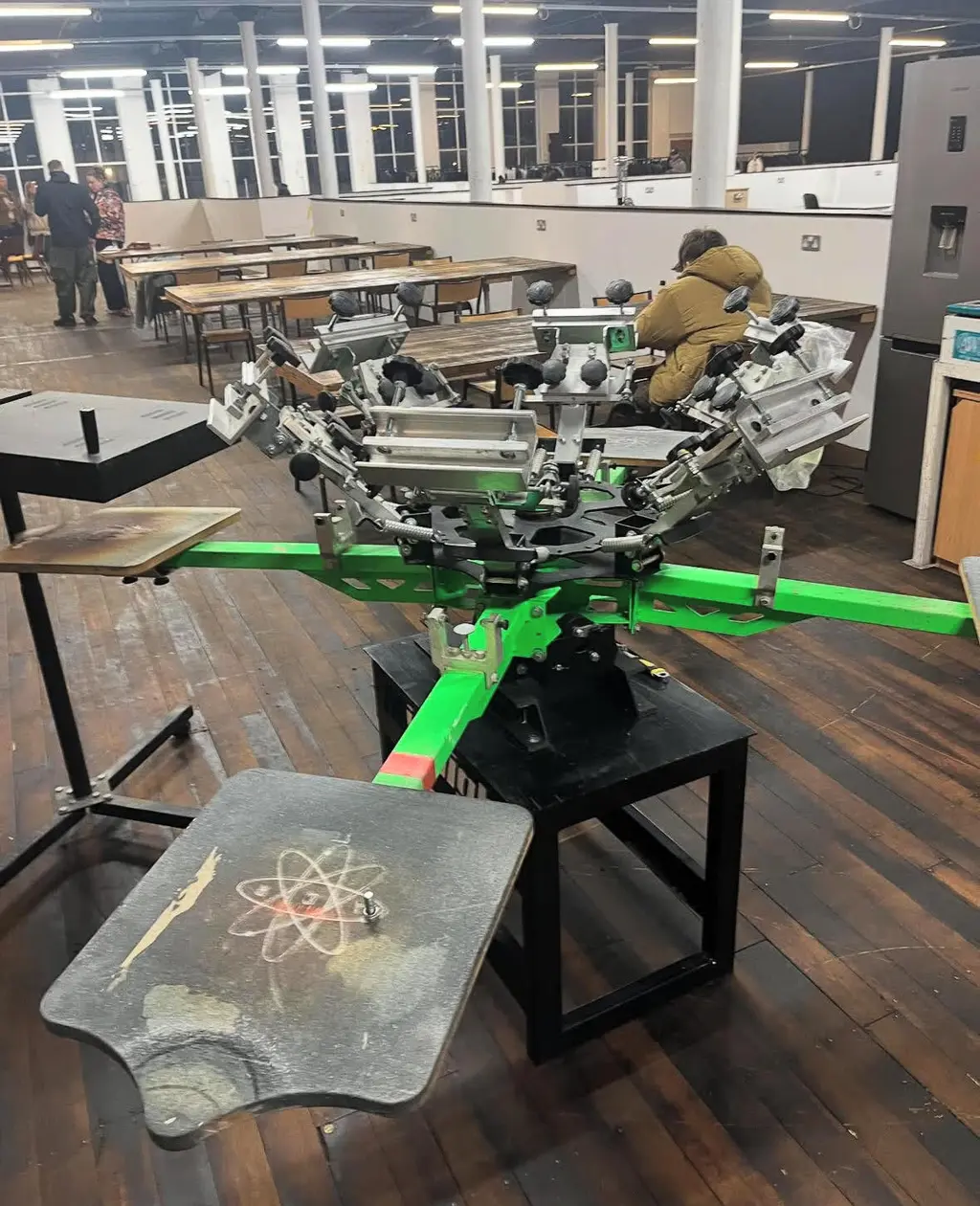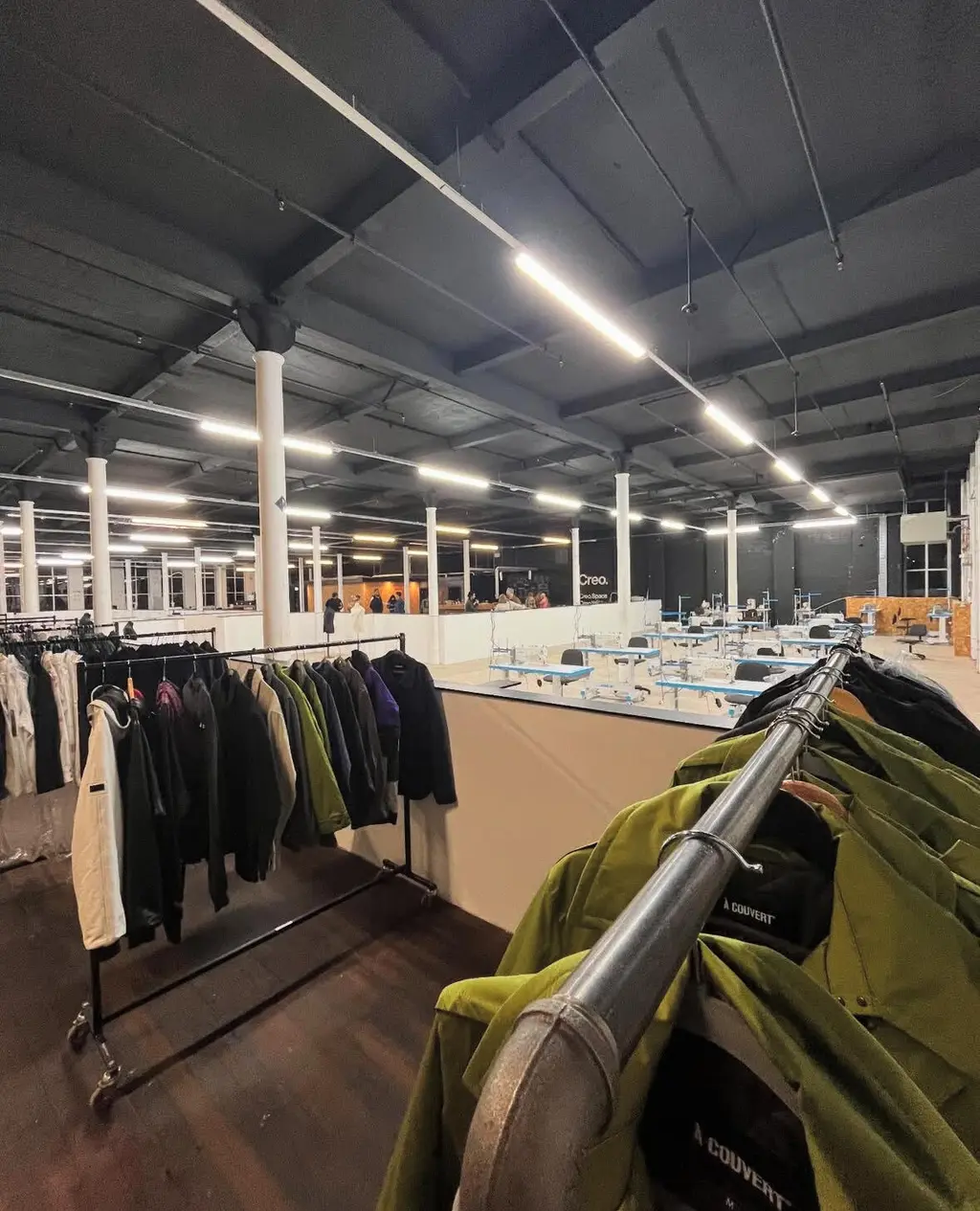Creo: the North’s new fashion work space

Founder Graeme Brown's ambition is to reinvent the manufacturing process by having it happen collaboratively, all in one spot, from start-to-finish. And this is just the beginning.
Style
Words: Fergal Kinney
Graeme Brown has a theory. In fact, he has a few. But mainly: something fundamental in British fashion isn’t working. As the managing director of luxury British outerwear label À Couvert, Brown saw a process that, at best, takes you around the country, and at worst around the globe, shedding time, cash and carbon in the process.
“The best way to be sustainable,” he begins, leading me through a large, open-plan mill in the Manchester border town of Oldham, “is to have a product that lasts the longest and travels the least in its journey. So instead of going back and forth all around the country or the world, why not bring the process into one place?”
Brown believes these cavernous premises are the solution. Creo spans the whole second floor of Osborne Mill, originally built as a cotton mill. There’s a brilliant BFI video from the ’70s of its enormous, already archaic cotton-spinning mules sprawling out across the industrial space – a factory floor that would fall silent shortly afterwards. Half a century on, Brown is proud to have returned the textile trade to the site.
Creo – its name meaning “I create” in Latin and “believe” in Spanish – has been set up as a wraparound solution to problems faced not just by fashion designers but by creatives and arts/design freelancers across the North. The plan for this industrial hub-slash-co-working space? To create a one-stop shop to design, make, shoot and sell products. It is, Brown tells me, the only place in the UK where a freelance designer can not only sketch the initial idea but touch the finished garment without having to leave its four, bare-brick walls.



The 42-year-old was born in Stretford, South Manchester, at the beginning of the Thatcher years. He initially worked in engineering, the start of a varied career that included working for both the London 2012 Olympic Games and legendary streetwear brand Gio Goi, before founding À Couvert with designer James Small and TV/film producer Nadia Jaynes.
“In my journey [through the fashion industry],” he says, “finding fabric was one of the hardest things that nobody tells you about. Which company makes what? Nobody is telling you about mills, or how to get the right contacts for those mills. I want to make that whole [process] easier, more time-efficient and more sustainable.” That ambition is on full display as he walks me through Creo’s factory floor.
With workstations and benches at the centre, the outer ring is a start-to-finish production line. There’s a buttonhole machine, a steam press, a coverstitch machine. Brown points to some imposing industrial plant. “Heavy leather machines for businesses that want to do leather goods,” he explains, then points out a giant screen-printing machine for both textiles and media. “We can print pretty much anything here.”
In a corner, an infinity cove ensures that products can be photographed professionally straight from the production line. Marketing and advertising needs will also be met by a soundproofed audio studio that’s in the process of being set up. À Couvert have just moved their seamstresses on site, their industriousness already visible in racks of samples near the entrance. “We’ve created an open-plan working environment,” enthuses Brown, who initially thought about splitting the mill into individual units before realising its scale was its potential.
“Creo is for businesses, makers, artists, videographers. It’s for everyone”
“Creatives pointed out that if you box yourself in, sure it’s great for certain aspects, but collaboration is about seeing things. It goes back to when they were at university with a lot of people working around them in different fields. That’s how ideas flow. There’s space and light so you can see other people doing things, talk to other people.”
They’re not wrong: Creo is a lot like a busy arts university, with people milling around operating a whole range of disciplines. The whole point is to encourage collaboration and networks based around Creo, Brown says, an antidote to often lonely and atomised 2020s working life. And it’s not just fashion workers who Brown is trying to attract. “It’s for businesses, makers, artists, videographers. It’s for everyone.”
Graeme has another theory. “Since the 1970s, we’ve seen consecutive governments on each side sell off manufacturing based on this idea that we’re going to be a service industry,” he says, fairly. “AI has thrown that on its head. Jobs are going to be going, [AI] is not going to go away.” What the British economy has in its favour, Brown argues, is its tradition of making. It’s a tradition that’s hard currency around the globe. “Japan buys a lot of UK products because they love the way they’re made,” he says. “The little tiny differences in stitching is what their buyers love. Humanity is a big part of that, and when jobs disappear it’s going to be more about the physical product. The hard graft and the connection between a person and a product.”
This isn’t the only problem Brown thinks he’s cracked. Highlighting Creo’s desire to attract other businesses to their way of working – he’s about to launch an app that other independent spaces can join to be part of the Creo network, providing somewhere for members to sell products from – he explains that “we want to approach the government and say: we’ve got an offer.” Everyone understands there’s a training disconnect in the UK, with skills gaps holding back growth and cutting sharply along regional divides. Even when people are on training, it’s a long period of time stuck on Universal Credit and paying for essentials like travel. “Here, we want to give people training, but they’ll be making stuff and earning straight away, with the possibility to progress.” As soon as enough businesses are in the building, that’s exactly what Brown plans to do, which is surely welcome in Oldham, a town with a higher than average rate of unemployment.
“Though Creo offers various peak and off-peak membership packages, with areas to sit and have a beer, do not, under any circumstances, call it a members’ club”
One reasonable critique of Manchester’s regeneration model is that it’s built on a lot of hot air: the soaring rents caused by property speculation are not exactly useful to kids trying to set up things from scratch. Graeme Brown’s gamble, on the more affordable outskirts of the city where that regeneration has struggled to reach, is to create something grounded in what was supposed to have been consigned to Britain’s past – manufacturing – to solve the problems of its economic future.
Just one thing: though Creo offers various peak and off-peak membership packages, with areas to sit and have a beer, do not, under any circumstances, call it a members’ club.
“The Soho Houses of the world are places to network and have drinks,” says Brown. But to him, these spaces where the fashion industry has traditionally done its chatting have an inbuilt conceptual problem: they’re great for talking, but much less useful for actually doing. “By virtue of people being here and part of this network, they are wanting to come and work. They’re here to create. Yes, it’s a community we’re building – but a community of people going to work.”
He pauses, as light floods through the enormous windows engulfing the mill in a vivid sunshine glow. “Talking about an idea is good. But we’ve got somewhere you can actually make that idea happen.”




